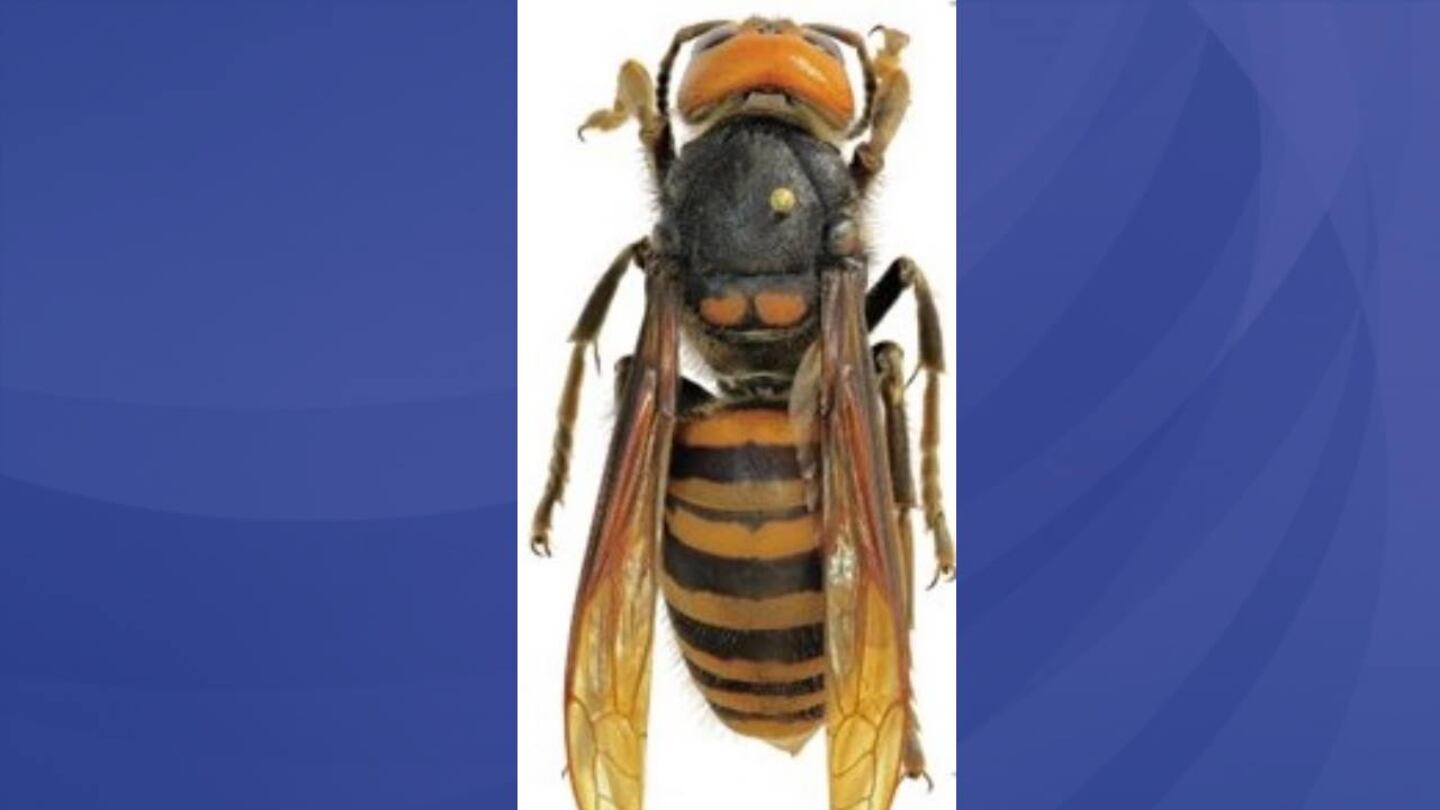They are more than 2 inches long and pack a painful sting that can be lethal at times. They also enjoy feasting on honeybees.
The so-called “murder hornet” has made its way to the United States, and bee harvesters are concerned that the giant Asian hornet, Vespa mandarina, could devastate the country’s bee population.
The insect has a distinctively fierce face with eyes that resemble Spider-Man, the cartoon character, according to The New York Times. The hornet also has tiger-like orange and black stripes that extend the length of its body, and broad wings one might find on a dragonfly, the newspaper reported.
“They’re like something out of a monster cartoon with this huge yellow-orange face,” according to Susan Cobey, bee breeder with Washington State University’s Department of Entomology.
We've had lots of questions about how Asian giant hornets compare in size to other similar-looking insects. Check out our new to-scale size comparison to see!
— WA St Dept of Agr (@WSDAgov) April 29, 2020
You can download a pdf of this image at https://t.co/cz5MK9SExt#asiangianthornet #invasivespecies pic.twitter.com/i6CXnT03eC
The insects’ sting can also be lethal. To demonstrate how much it hurts, YouTube personality Coyote Peterson has shown what the sting is like on his show “Brave Wilderness.” The video shows an “instant goose egg” forming on his arm where the hornet stung.
"Most people are scared to get stung by them,” Ruthie Danielsen, a beekeeper, told the Times. “We’re scared that they are going to totally destroy our hives.”
According to the Washington State Department of Agriculture, the hornets reached the United States for the first time in December in the city of Blaine. The department verified four reports of the insects, according to CBS News. The WSDA also said some of the hornets were found in two locations in British Columbia.
Todd Murray, an entomologist and invasive species specialist, told WSU Insider the “shockingly large hornet” is a “health hazard, and more importantly, a significant predator of honeybees.”
The insect feeds on large insects, including native wasps and bees, WSU Insider reported. With its voracious appetite, the hornet devastated the European honeybee, which has no defense. The hornets are most dangerous from late summer until early fall, WSU researchers said. The hornets attack hives, killing the adult bees and eating the larvae and pupae.
Several hornets can destroy a hive within minutes, researchers said.
WSDA has new resources available on the #AsianGiantHornet, including tips on
— WSU WSPRS (@PICOL_mgr) April 14, 2020
trapping at https://t.co/2v4dnHOkU5.
Find lots more on the WSDA Asian giant hornet page (https://t.co/oyUDMWpAdy). AGH Fact Sheets (like this one) are in Additional Resources.#InvasiveSpecies pic.twitter.com/QCgbEItOeY
Cox Media Group





